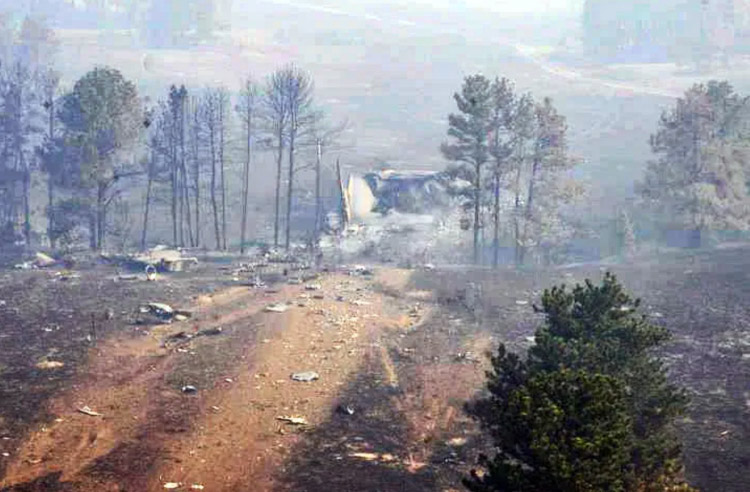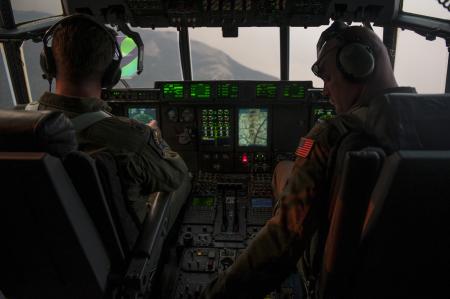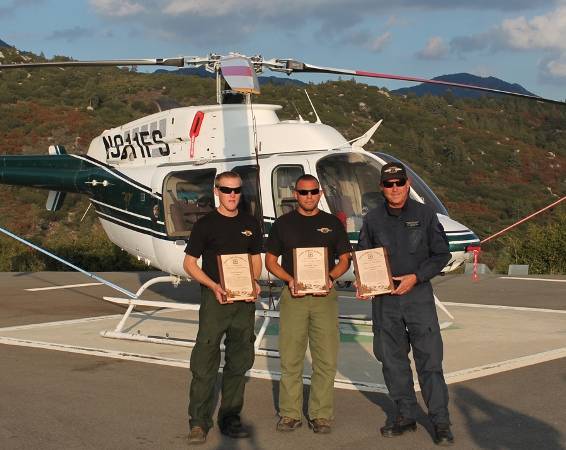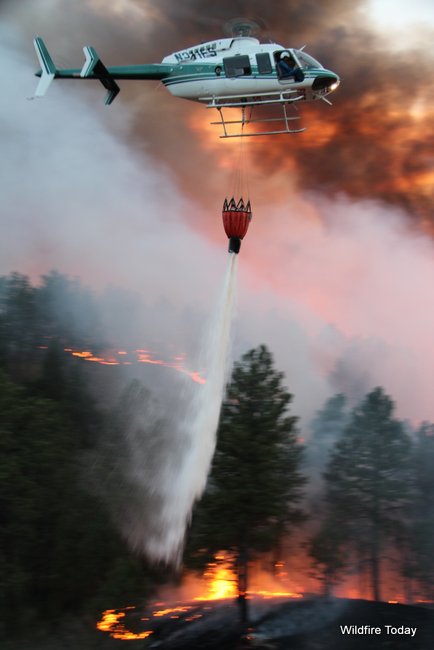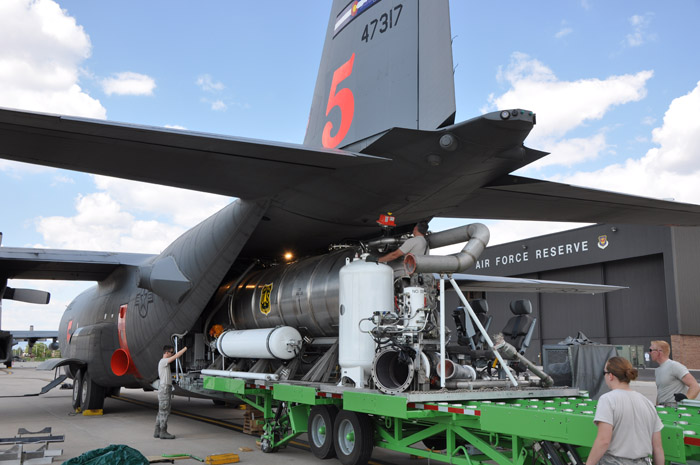
Military and civilian officials are considering making it possible to activate military air tankers earlier than has been done in the past to help suppress wildfires. C-130 aircraft from the Air National Guard and Air Force Reserve have access to eight Modular Airborne FireFighting Systems (MAFFS) that can be loaded into their cargo holds. These units can carry up to 3,000 gallons of fire retardant which can be pumped out by compressed air over wildfires.
According to an Associated Press article by Dan Elliott, General Charles H. Jacoby Jr., head of the U.S. Northern Command at Peterson Air Force Base in Colorado Springs, said on Wednesday that making the C-130s available more easily is being weighed.
Under current regulations, privately owned air tankers have to be committed to fires before the military aircraft can be activated. This would have to be changed for General Jacoby’s suggestion to be implemented.
When the fire season ended last year there were only nine large air tankers under conventional exclusive use contracts. But those contracts expired over the winter and the U.S. Forest Service is evaluating new proposals for old “legacy air tankers” as well as what the agency calls “next generation” air tankers that are faster and can carry more retardant. The USFS needs to award the new contracts very soon, since some of them begin their mandatory availability periods in mid-February.
At least four companies are in the running to supply a total of seven or more next-gen air tankers on this next contract. The list includes Neptune, Minden, Aero Air, and Aero Flite, and possibly Coulson and 10 Tanker Air Carrier.
Since the USFS has allowed the air tanker fleet to deteriorate from 44 in 2002 to 9 in 2012, it is imperative that something be done to make up the shortfall of this important fire suppression tool. Having only 9 is a pretty low threshold for having all of them committed, which should technically make it legal to activate the military C-130s much more frequently than we have seen in recent years. Especially if you consider that it is important to have an adequate number of air tankers standing by at air tanker bases ready for a quick response to new fires — in addition to any air tankers that may be committed to going fires. Fast, aggressive, initial attack by ground and air resources can minimize the size and the expense of wildfires.
Air tankers don’t put out fires, but aerial retardant can under the right conditions slow them down making it possible for firefighters on the ground to move in closer and stop the spread. The use of aircraft can keep fires smaller while saving taxpayers money, in addition to reducing the threats to lives, homes, and private property.
Thanks go out to Al and Bean.





